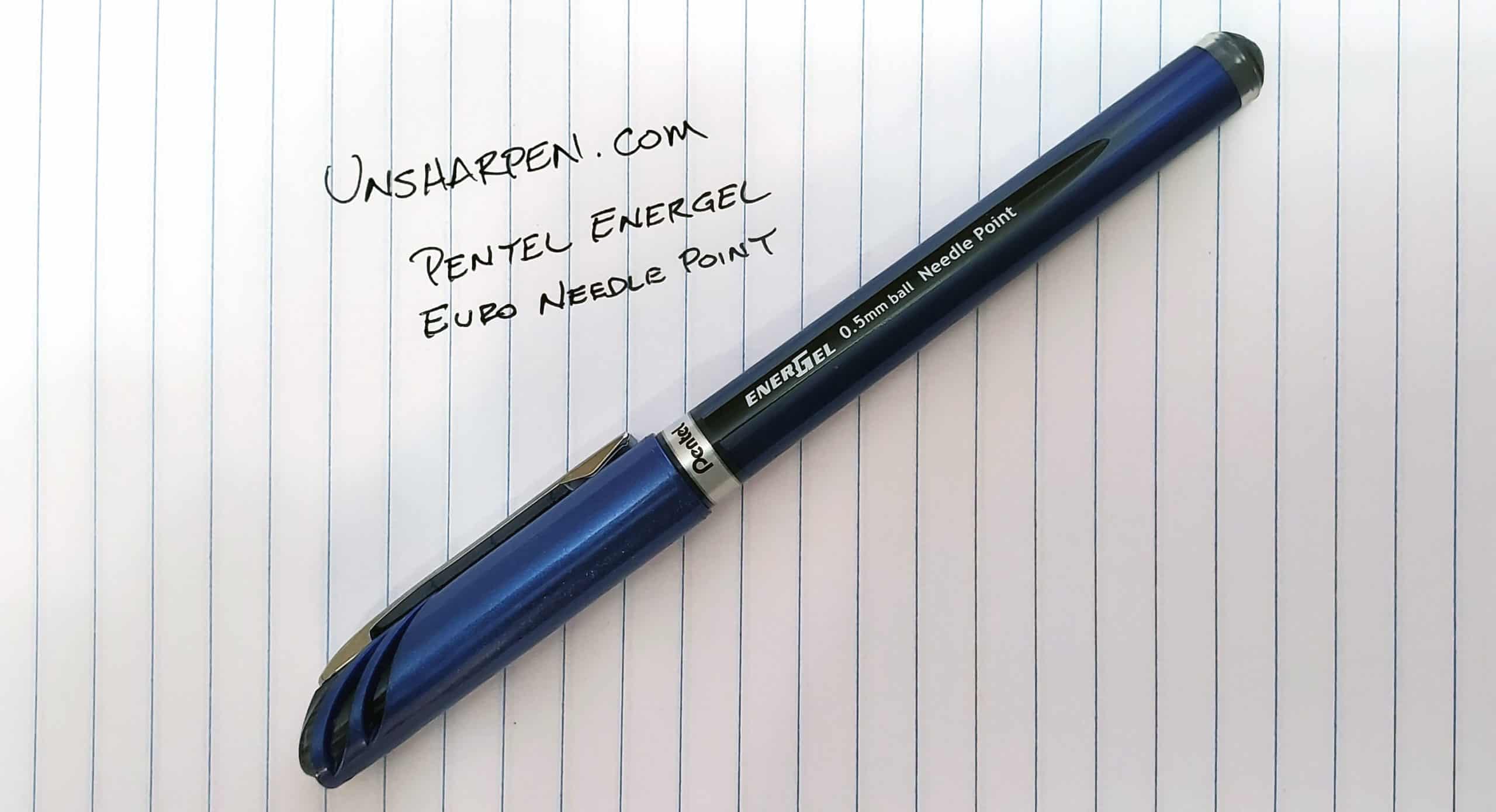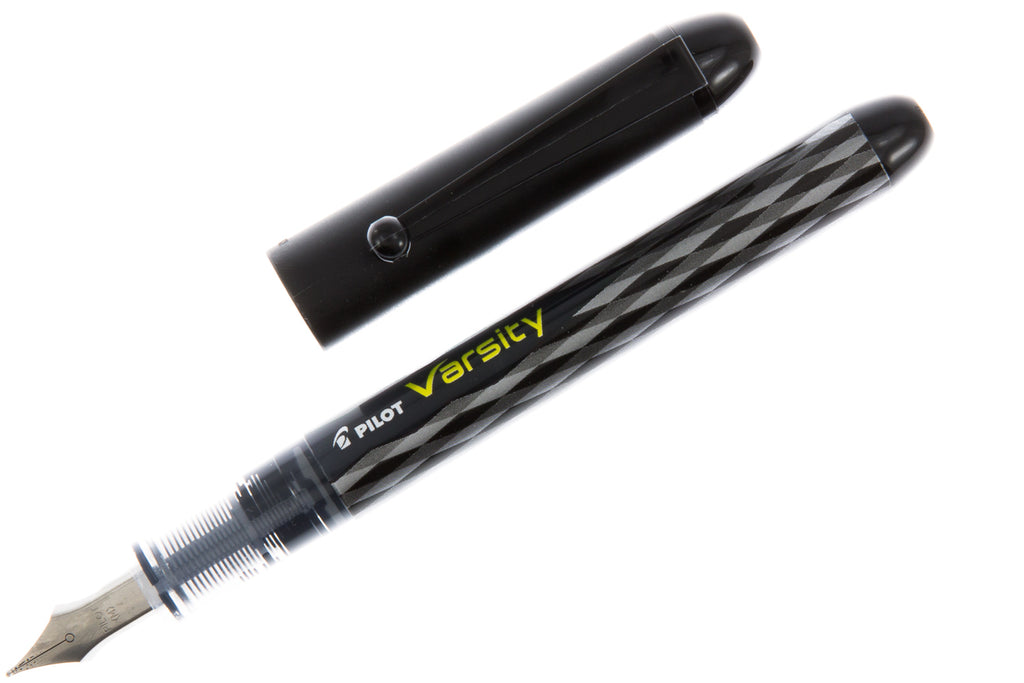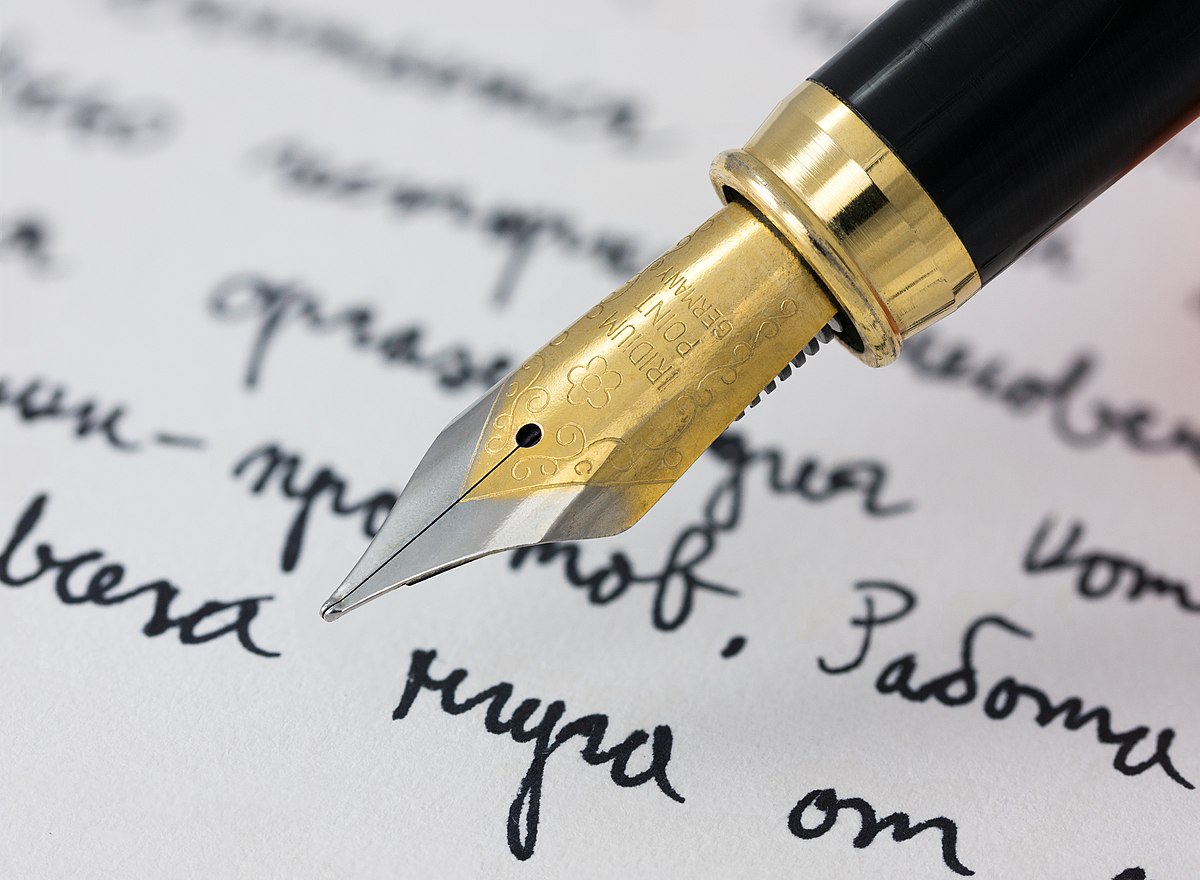The other day, I bought my first pen. I have purchased pens plenty of times, but never bought a specific pen as a deliberate act. I have always chosen my pens rather thoughtlessly — taken whatever was cheap and generic, or accepted whatever was handed to me by the woman who handles the supply closet where I work.
I did, back in 2015, start asking for green instead of red pens. As an English teacher marking up student essays, I worried that red was too harsh. Green was more forgiving, more humane. Did it change the way I graded? Did I become more “green” than “red,” more compassionate, less inclined to slash or stab at tangles of verbiage, leaving a trail of blood? Perhaps I did. Perhaps it was a self-fulfilling prophesy.
It’s always a self-fulfilling prophesy, right?
Going back even farther, I started life with the classic disposable Bics, sometimes blue, usually black. I became rakish toward the end of high school, taking on Calculus tests in pen not pencil. Low-grade defiance: I am who I am, blots and cross-outs and all. Take it or leave it. And the thrill of the high-wire act: working without the security of an eraser.
Then in college I accidentally stumbled onto the perfect pen. It had a blue body, thick and solid enough that I didn’t feel like I was writing with a plastic toy. The ample cap slid on with a satisfying snap. The ink came out just right, the tip slid across the page. Because you felt like you were writing with something that was well made, you took what you were writing more seriously.
But like any young man who does not realize what he has, I let that pen slip away. I was inattentive, distracted. I bought these wonderful instruments only haphazardly at the college bookstore, without bothering to remember the model or brand. I tossed them in the pockets of coats and then put them away for the winter. I’d drop them carelessly into backpacks I wouldn’t empty out for months. There are plenty of pens out there. There is lots of time yet. I need to play the field. I don’t need to be tied down.
Sometime after college these wonderful pens stopped appearing. But every few years I’d think back wistfully on that youthful fling, that fluid motion from the past.
There was Martin Sheen on “The West Wing” speaking for all of us: “I used to have the perfect pens. Every day right here, in my pocket. I loved those pens! Balance, great action, paper soaked up the ink — what the hell happened to those pens? Do they not make them anymore? I kept that company in business.”
One of the things that happens as you get older is that you want to buy stuff that lasts. Time is more precious when you’re doing the stressed-out father routine than loafing around your dorm room, and you’d rather not spend that time driving to Home Depot re-upping the cheap stuff. Give me something that’s going to be around in six months, even if it costs a little more.
Another thing that happens is you start wanting grown-up stuff. You come home at the end of the day and you want to sink into a solid piece of furniture, not a beanbag chair. When you’re getting ready to head out to clean your own gutters, there’s less appeal in purchasing pre-torn pants.
One last thing that happens — and this fascinates me even as it has happened to me — is that you’ve just seen enough of . . . everything — that you can see things for what they are and how well they work for you. I realized this was happening to me a few years back when I found myself comparing ingredient labels between brands of medicine to identify which had the mixture of “active ingredients” I knew worked best for me. That is absurd, I know.
But it’s the same impulse that allows me to see restaurant meals less as alchemy (as I once did) and more as the product of specific ingredients and simple steps that you can actually do just as well or better on your own. This dawned on me the first time I had home brew, at a kayak race in the early 2000s. So this is what beer can taste like when it’s lovingly cultivated, not bottled in a factory. Same thing when I first realized I could buy a way better steak at the Co-op and cook it more carefully than Joe the Distracted Chef down at Applebees.
So maybe it was this same grown-up impulse that made me think to myself, “You know what? I do lots of writing by hand. Enough of these cheap, little boy pens.” Time to buy a grown man’s pen. It was time to track down that perfect pen from college and see if it was really all that I remember.
It took some research, which was comically vague at first as I wracked my brain for even the vaguest memory of what that pen looked like. As I got deeper into the process, I started to learn more about the types of pens. So this sort of pen that I’ve always hated has a name . . . ? You start to be able to categorize the world. Your dreams, those mythic dreams you had of the perfect house you’ve always longed for suddenly seem a whole lot more doable once you realize, “Oh, that’s a bungalow — that’s what I like.” Or, “It was a gel pen — that’s why it glided across the page.”
This is the dream of being deliberate, of understanding the classifications of things in our world, of driving toward and understanding of our long-held preferences: now I can choose only and exactly what I want, with no additional effort, and skip the things I don’t.

Turns out it was a Pentel EnerGel that I had back in college. The new ones seem a little thinner than what I remember, but it’s the same pen. I love it. But I kept experimenting. I bought some Uniballs, too. I even decided it was time to try a fountain pen, and that was my favorite, in the end. What I loved most about it was that it was truly a grown-up’s pen. It’s actually well-made, even more so than the Pentel. Fountain pens have personality: the nib writes differently depending on how you hold it. The ink comes out differently — you can almost feel it being absorbed onto the page. Sometimes it skips if you don’t hold it just so. I find my writing slower and more looping, as if I am savoring the movements of the nib across the page. It is of a piece with the sort of slow reading that I find myself wanting to do: “ . . . to read slowly, deeply, looking cautiously before and aft, with reservations, with doors left open,” as Nietzsche once wrote. Ruminating, thinking, questioning. Writing more slowly and really turning over thoughts in your head and savoring the movement of the fountain pen across the page, the paper soaking in the ink.

The one I bought was a fairly cheap one — a Pilot Varsity — which is actually a disposable fountain pen. But that was just a trial. Now I want to get something a little better, something that will last, something that feels like it was made, not produced, something I can refill myself, something I can turn to every night for the next twenty years. It feels like a scholar’s pen.
I’m hoping to find my daily-use pen, too. I think it’s going to be some variety of Uni-Ball: something quick-dispensing, well-made, authoritative. I’m still experimenting. Then I’ll just order and reorder that pen for the next twenty years to have at work. I’ve already found my ideal legal pad for taking notes, and my perfect small pad for writing my to-do lists.
A good, dependable action pen for being at work, and then a fountain pen for writing longhand or taking notes at home in the evening.
Finally, after all these years, the right tools for the job.

